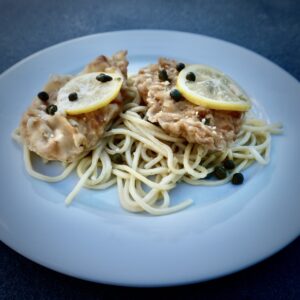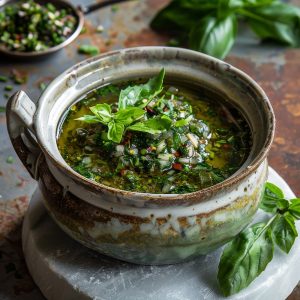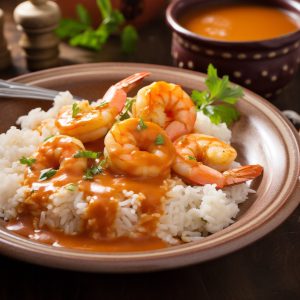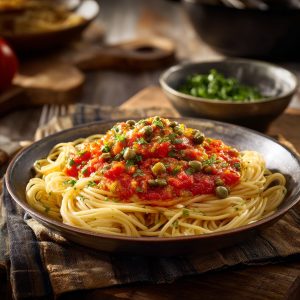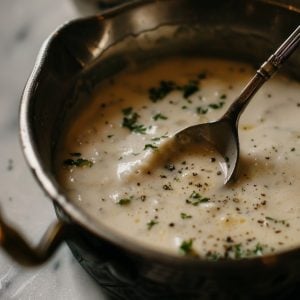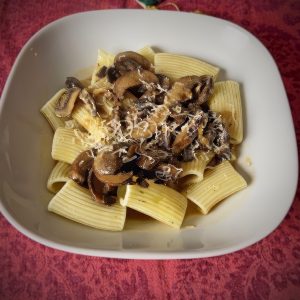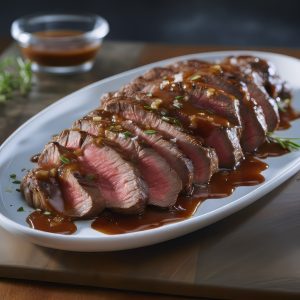How to Make a Delicious Lemon Caper Sauce Tonight
Lemon caper sauce brings bold, bright flavor to just about anything. It’s tangy, buttery, and packed with personality. This version keeps it simple and fresh. You’ll start by softening shallots in a mix of butter and olive oil. That base gives the sauce richness without feeling heavy.
Next comes the punch—fresh lemon juice and briny capers. Together, they add acidity and a salty pop that cuts through fat and wakes up the palate. It’s balanced, sharp, and full of flavor. A handful of fresh parsley at the end gives it color and a clean, herbaceous finish.
You can drizzle this sauce over fish, chicken, vegetables, or pasta. It’s quick to make and easy to love. There’s no flour, no cream—just bold ingredients working together. Whether you’re cooking dinner for yourself or guests, this sauce adds something special without extra stress.
If you’ve never made a pan sauce before, this is a great place to start. Everything comes together in one skillet in under 20 minutes. Clean-up is minimal. The flavor? Anything but.
Lemon Caper Sauce Recipe
Ingredients
- 3 tablespoons butter unsalted, divided
- 1½ tablespoons vegetable oil
- 1 shallot minced
- 1 cup chicken stock
- 3 tablespoons lemon juice
- 2 tablespoons flat-leaf parsley finely chopped
- 1 tablespoon capers
- salt and pepper to taste
Instructions
- Heat a saute (fry) pan over medium-high heat.
- Add half the butter (1½ tablespoons) and the oil. Heat until the butter melts and the oil is hot.
- Add the shallot and sauté 2 minutes, or until translucent.
- Add the chicken stock and reduce by half.
- Stir in the lemon juice, parsley, and capers.
- Whisk in the remaining butter and season with salt and pepper to taste.
Dishes That Pair Well with Lemon Caper Sauce
| Dish | Description | Why It Pairs Well |
|---|---|---|
| Grilled or Pan-Seared Fish | Light, flaky fish like cod, halibut, or tilapia. | The lemon and capers cut through the richness and enhance the delicate flavor of the fish. |
| Roast Chicken | Bone-in or boneless chicken roasted until golden. | The sauce adds brightness and contrast to the savory, roasted flavors. |
| Steamed or Roasted Asparagus | Tender green spears cooked until just crisp. | The acidity of the sauce brings out the earthiness of the asparagus. |
| Sautéed Shrimp | Quick-cooked shrimp in garlic and oil. | The lemon lifts the sweetness of the shrimp, and the capers add a salty pop. |
| Angel Hair Pasta | Light pasta served with olive oil or butter base. | The sauce coats the pasta lightly, adding flavor without overwhelming it. |
| Grilled Zucchini or Eggplant | Sliced and charred vegetables served warm. | The bright sauce balances the smoky, soft vegetables. |
| Crab Cakes | Golden, pan-fried crab patties. | The sauce complements the richness and enhances the seafood flavor. |
Who Invented Lemon Butter Sauce?
The invention or origin of lemon caper sauce, like many culinary creations, isn’t attributed to a single individual. Instead, it’s the result of culinary traditions and the evolution of recipes over time. Lemon caper sauce, with its combination of lemon, capers, and other ingredients, is a popular component of Mediterranean and Italian cuisines.
Mediterranean cuisines, especially those from regions like Italy, have a long history of using simple, fresh ingredients to create flavorful sauces and accompaniments for various dishes. Lemon and capers have been staples in these cuisines for centuries, and the combination of the two in a sauce is likely a result of experimentation and the desire to enhance the flavors of dishes, particularly seafood.
While the specific origin of lemon caper sauce is unclear, it has become a well-loved and widely used sauce in many kitchens around the world. Chefs and home cooks alike have contributed to its popularity by incorporating it into recipes and adapting it to suit different tastes and preferences.
Ingredients
Capers are small, green flower buds that are commonly used as a seasoning in Mediterranean cuisine. These buds come from the caper bush (Capparis spinosa), which is a perennial plant native to the Mediterranean region. Capers have a distinctive tangy and salty flavor, making them a popular addition to various dishes.
Butter is a dairy product made from the fat and protein components of milk or cream. It is produced by churning or agitating the cream, causing the fat globules to separate from the liquid, known as buttermilk. The remaining solid fat is then further processed and may be salted or left unsalted, depending on the desired end product.
Shallots are a type of onion that belongs to the Allium family, which also includes garlic, onions, and leeks. They have a milder and sweeter flavor compared to regular onions, making them a popular choice in various culinary dishes. Shallots are characterized by their small size, elongated shape, and thin, coppery-brown papery skin.
Chicken stock is a liquid preparation made by simmering chicken bones, meat, and aromatic vegetables in water. It serves as a flavorful and versatile base for soups, stews, sauces, and various other dishes. The slow simmering process extracts the flavors, nutrients, and gelatin from the chicken bones, resulting in a rich and savory liquid.
Lemon juice is the liquid extracted from the pulp of lemons, the citrus fruit belonging to the species Citrus limon. It is a common and versatile ingredient used in culinary, beverage, and even non-culinary applications. Lemon juice is prized for its tangy and citrusy flavor, as well as its ability to enhance the taste of various dishes and beverages.
Flat-leaf parsley, scientifically known as Petroselinum crispum var. neapolitanum, is a variety of parsley known for its flat, broad leaves and fresh, vibrant flavor. It is one of the two main types of parsley commonly used in culinary applications, the other being curly leaf parsley. Flat-leaf parsley is favored for its versatility and is a popular herb in various cuisines around the world.




